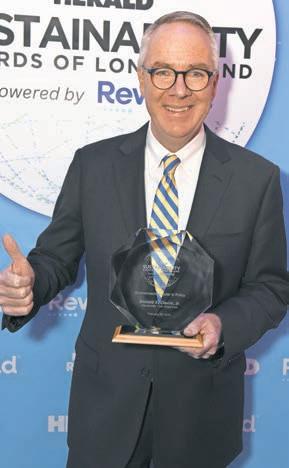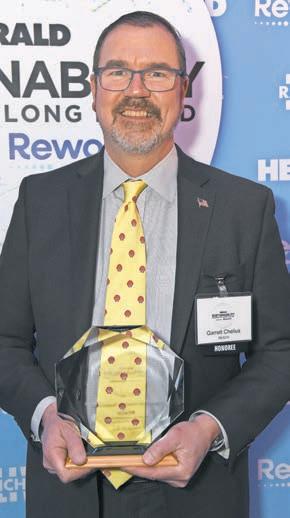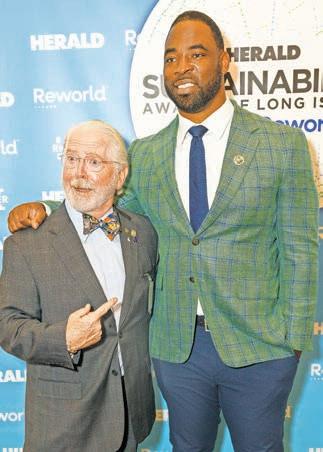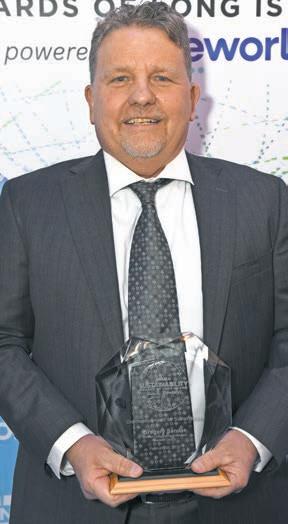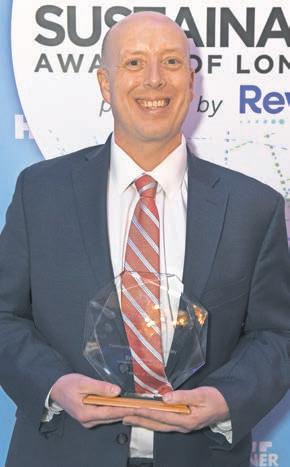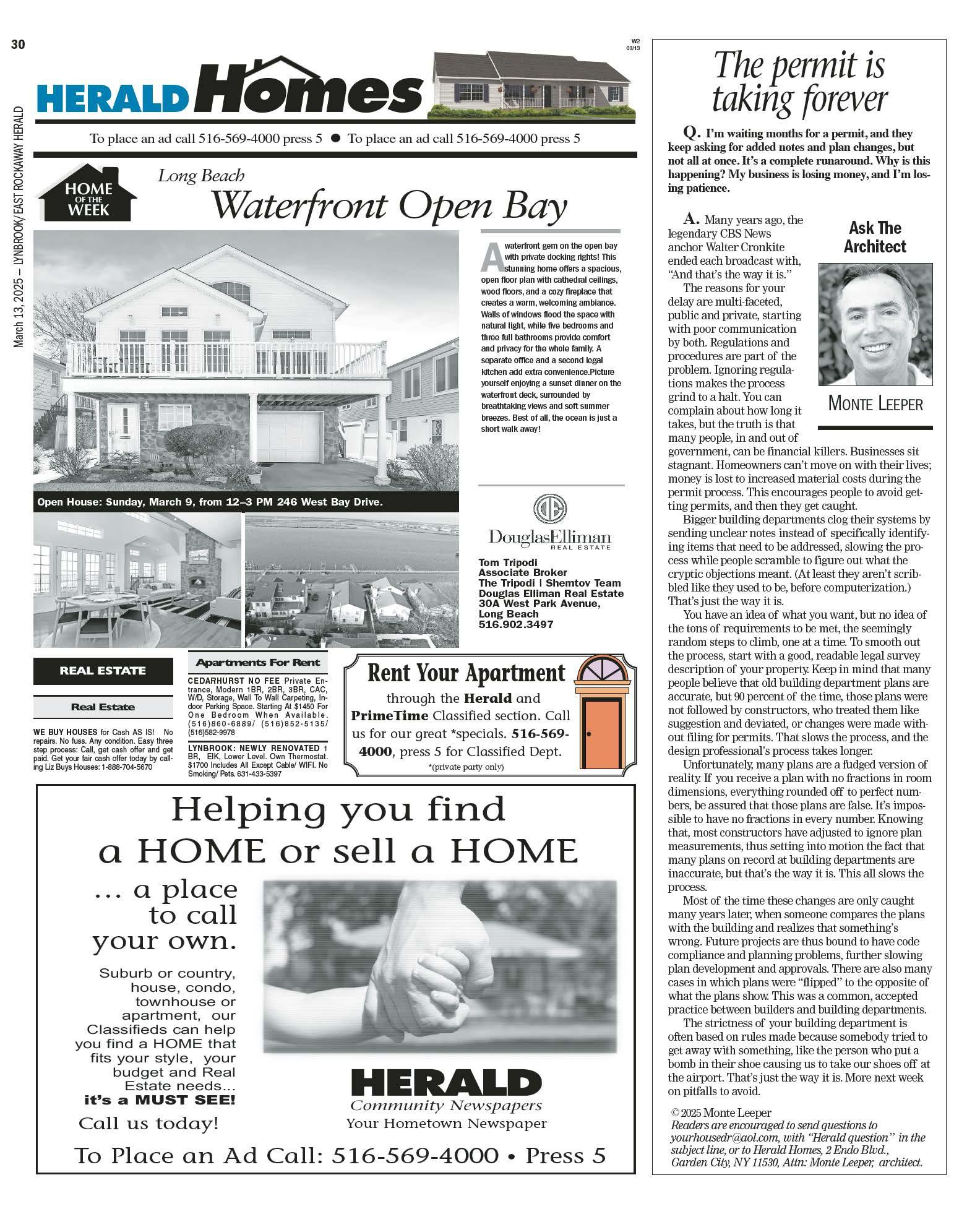




By AINSLEY MARTINEZ amartinez@liherald.com
In late January, Todd Meyer, 55, of Lynbrook, checked into New York University Winthrop for a routine procedure, and as long as the surgery went as expected, he could leave the hospital that day, doctors told his wife.
But as Janna Trevers-Meyer, 45, sat waiting in the Mineloa-based hospital to take her husband home, it became clear the surgery did not go as planned.
A natural complication extended his stay for 32 days, with over a week in the Intensive Care Unit.
Ultimately, the last resort proved necessary: Meyer needed a new heart.
Heart transplants can be lengthy, complicated, and life-consuming, said Kathryn Malhame, lead transplant nurse practitioner at North Shore University Hospital.
Not only do patients and their families play a daunting game of patience while waiting to receive a heart, but once the organ arrives and the surgery finishes, the recovery process typically requires a lifestyle overhaul.
“Right after a heart transplant, patients are at the highest risk for infection because their immune system is very weak,” Malhame explained.
On Feb. 21, Trevers-Meyer celebrated her husband’s successful heart transplant at NYU Langone Health in Manhattan, but now she had to focus on a new hurdle: getting their apartment ready for his recovery.
Trevers-Meyer’s to-do list grew into an invasive species dominating her life: carpooling, attending her own appointments, getting their car inspected, and cleaning their home.
“My husband’s health situation was definitely made more stressful because I needed to think about logistics,” Trevers-Meyer said.
Trevers-Meyer praised the quality of healthcare her husband received at both hospitals, but found the process to be confusing.
She had numerous questions not suited for doctors in Manhattan and Mineola to answer: What are the best cleaning services in Lynbrook? What resources might make the process easier for someone who’s never navigated this situation before?
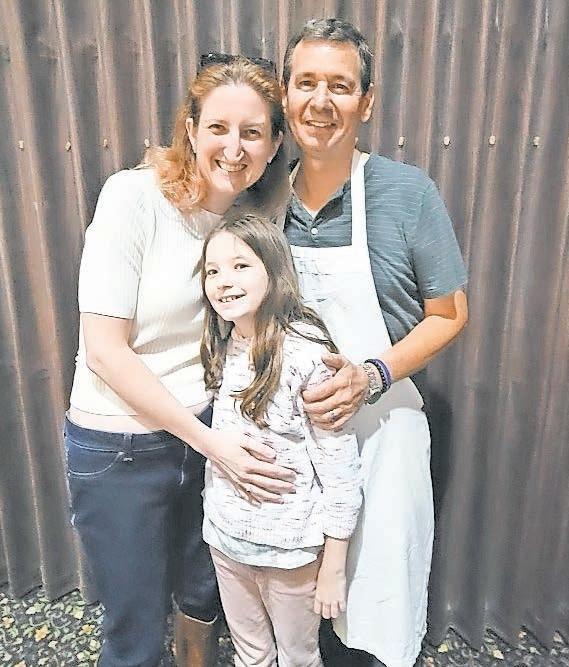
And, heart surgeries are relatively rare with only 5,000 taking place globally per year, representing a tenth of total organ transplants performed.
Trevers-Meyer relied on her friends and online communities, and found leaning on laymen more approachable.
Online, she found suggestions for professional cleaners in the area, and read advice from other caretakers who had experienced the same difficulties.
“One post suggested an air purifier in our apartment, so I started researching the highest rated and best performing ones,” she said.
Malhame and Ghenwa Atallah, a transplant nurse navigator, work in the hospital’s heart transplant team and assist patients with the post-operation process.
Atallah echoed the strenuous sanitation efforts necessary after the initial transplant, and added these
practices often become embedded in a patient’s life indefinitely.
Many times, essential medications for preventing the rejection of an organ, which transplant patients take, impair the body’s immune system, leaving heart transplant recipients immuno-compromised for life.
But, in Atallah’s experience, patients and caretakers don’t need to feel overwhelmed with making every area spotless. Regularly disinfecting high-touch surfaces with antibacterial products such as gels or sprays typically is enough.
Still, the shift in daily routines can remain challenging.
Malhame said daily recovery includes monitoring vitals, such as temperature; if it reaches 100.4°F or higher, they should contact their medical team.
Patients also should watch for symptoms like shortness of breath, pain around the surgical site, or signs of infection like cough or nausea.
Beyond cleaning, heart transplant patients must take additional precautions, like wearing a mask in crowded places and avoiding handling pet waste or contact with rodents, amphibians, and reptiles.
Gardening or working with soil is prohibited for six months, as it may expose them to bacteria.
Food preparation is also crucial—fruits and vegetables must be carefully washed, and no raw meat is allowed. All meat should be well done, and leftovers need to be eaten within two to three days.
“Education is key, and we encourage our patients to stay in close communication with us about any new symptoms or concerns they might have,” Malhame said.
With these precautions, heart transplant patients can experience a rocky road to recovery, one filled with life-altering routines.
For this reason, Trevers-Meyer said she finds solace in community support.
“Other people helped me the most. A friend set up a donation page for First Responders for my husband since he was a firefighter in the US Air Force, and we’re still receiving gifts to assist with the costs associated with this type of health issue,” she said. “My support system, including my family, my husband’s family, and my synagogue, were invaluable and made this process manageable for me.”
ERASE Racism named April Francis Taylor acting president, effective immediately. Taylor, a highly regarded advocate for equity and educational justice, steps into the role after Laura Harding’s tenure as president, which ended earlier this year.
Taylor has spent much of her career advocating for systemic change, with a focus on dismantling structural barriers to education and fostering inclusive learning environments. Her work spans Nassau and Suffolk Counties, where she has held both teaching and administrative roles.
Taylor’s expertise also includes policy development, conflict resolution, leadership training, and regional collaboration, all of which will play a key role in her new position with ERASE Racism, a New York-based civil rights organization dedicated to exposing and addressing structural racism, particularly in public school education and housing.
“April brings to ERASE Racism a depth of experience advocating for and implementing programs aimed at educational equity on Long Island and statewide,” said Kalpana Bhandarkar, co-chair of ERASE Racism’s Board of Directors said in a news release. “We know that our organization and our initiatives will benefit from her experience and expertise, as we work to enhance and expand ERASE Racism’s vital legacy.”
Taylor has been honored for her dedication to education, earning numerous accolades such as the Most Dedicated Teacher Award from the Uniondale school district and the Educator of the Year Award from the Town of Brookhaven. She has also taught in East Rockaway and been a program director for Eastern Suffolk BOCES. Her work also extends beyond the classroom — Taylor has actively collaborated with policymakers, nonprofit organizations, and advocacy groups to
challenge discriminatory practices and promote social justice.
“I’m excited to take on this new leadership opportunity with such a distinguished civil rights organization,” Taylor said in the release. “With the unwavering support of the dedicated Board, administrative team, and community, we will continue ERASE Racism’s mission together.”
She has served in leadership roles, including as vice president of the New York State Council of the Social Studies and on the executive committee of the Middle States Council of the Social Studies. Her ongoing commitment to the improvement of her community is reflected in her current board positions with the Long Island Latino Teachers Association and Equity 4 Long Island Youth, as well as her role as Education Chair for the Islip-Smithtown Branch of the NAACP.
“April has a relentless drive to eradicate racial disparities and advance equi-
ty,” said Edward Pichardo, co-chair of ERASE Racism’s Board of Directors, said in the release. “That drive is essential at this crucial time in our history, as we continue to propel transformative change on Long Island.”
Taylor is also an adjunct professor at Hofstra and Stony Brook universities, where she teaches courses on educational leadership and instructional best practices. She is also pursuing her Ed.D. in Educational and Policy Leadership at Hofstra.
“ERASE Racism’s work is critical to addressing the devastating impact of historical and ongoing structural racism,” Taylor said in the release. “I am honored to lead this incredible organization and help drive lasting change, particularly in education and housing. Together, we will continue to build on ERASE Racism’s vital mission and expand its impact.”
— Jeffrey Bessen




manufactured — which has led to a high volume of products that are difficult to recycle, Healy said.
Some cardboard, like that used in thin cereal boxes, has no value, while corrugated cardboard, used in shipping containers, is in high demand. And the challenge of recycling is complicated by manufacturers’ use of ingrained labels and dyes on products, which disqualifies them from being recycled, regardless of the materials used.
While there is a market for some materials like cardboard and certain plastics, their value has declined as countries like China and Southeast Asian nations have tightened their import restrictions on foreign waste, Healy said. The industry, he explained, has little incentive to recycle products that can’t be reused, which drives up municipalities’ costs of properly disposing waste.
And their residents are often confused about what to recycle because, as Healy noted, when they see plastic or cardboard, they simply think: recyclable. The process — and the business — of recycling would be easier and more efficient if manufacturers created products with recycling in mind, instead of putting the burden on consumer and municipalities.
Conflicting research, and a variety of local regulations, only add to the confusion — and a resulting cynicism — about supposedly reusable products.
“Don’t waste your time,” Frank Boni, of Lynbrook, said. “Less than 4 percent gets recycled, if that much. It all goes to the dump, and nothing is separated.”
Others recycle as much as possible, but feel uncertain given the inconsisten-

phil Healy, Lynbrook’s superintendent of public works, said that the growing problem of waste management is attributable to misconceptions about recycling — and who is responsible for properly disposing of waste.
cies in labeling and regulations. “It’s difficult, because each town has different rules,” Christina Guilino, of Lynbrook, said. “I check what’s recyclable where I am.”
The state Department of Environmental Conservation estimates that at least 80 percent of the refuse sent to landfills or combustion facilities in New York has some monetary value, and could potentially be recycled or reused.
In the Town of Hempstead, residents recycle 25 to 30 percent of their waste, below the national average of 32 percent, according to Yiyi Wang, a researcher at Stony Brook University.
Some city and state officials argue that residents should recycle any items they think may be reusable. “If you’re not sure, let us take care of it,” Joshua Goodman, a deputy commissioner of
the New York City Department of Sanitation, told the City, an independent news organization. “We are the experts. If you put it in the trash, it definitely doesn’t get recycled.”
But Healy said that filling your recycling bin creates inefficiencies and increases expenses. When trash ends up in recycling, transporting it to the correct facility raises the cost of disposing of it. “The recycling company is forced to treat (it) as trash,” he said, “and that’s a cost burden for municipalities.”
Most of Lynbrook’s non-recycled trash — roughly 11,000 tons per year — is sent to Reworld Hempstead, a wasteto-energy incineration plant in Uniondale that processes hundreds of thousands of tons of waste annually, converting it into steam that powers turbines for electricity generation. Waste
plastics no. 1 and 2
Corrugated boxes and cardboard newspapers, paper
Cleaned cans that have been washed
Cleaned glass bottles that have been washed
magazines
Junk mail
incineration costs $85 per ton, compared with $110 per ton for recycling because of the labor involved in processing materials by hand.
As for recycling, the Lynbrook Department of Public Works collects about four tons a day.
The village spends about $1.2 million per year on waste disposal, for both recycling and incineration. It has explored alternative waste management technologies, such as more efficient methods for collecting and disposing of trash, but these options have proven to be cost-prohibitive, Mayor Alan Beach said.
“But maybe in the future, the industry will develop . . . environmentally friendly and cost-effective ways of picking up and disposing of trash,” Beach said.
The village’s public works budget for 2025-2026 is pending, but Beach said he is confident that Healy will keep operations as efficient as possible.
Lynbrook Boy Scouts took the seats of village officials at Boy Scout Government Night on Monday, and led the village board meeting. The scouts gave speeches at the podium, taking on roles of local government leaders. They explained the duties of village officials, and led the agenda items. Boy Scout Government Night aims to teach young scout about the role of government in village residents’ lives.
— Ainsley Martinez
Lynbrook Boy Scouts took the seats of village officials at Boy Scout government night on monday, and led the village board meeting.




By TONY BELLISSIMO tbellissimo@liherald.com
Trailing Lynbrook by a point in the waning moments of Monday night’s Nassau Class A girls’ basketball championship game, Wantagh’s designed play off a timeout resulted in a good look but no basket.
But in one fell swoop, sophomore Kayla Mannix not only saved the ball from landing out of bounds but found senior Riley Forthofer open in the paint. Forthofer banked in a layup with 7.7 seconds remaining to give Wantagh a thrilling 44-43 victory over top-seeded Lynbrook at Farmingdale State College.
“I’m just in shock right now I honestly can’t believe this,” said Forthofer, who hit two free throws with 46.5 seconds left to bring the Warriors within one. “Kayla was in the right spot at the right time and got that rebound,” she added. “She’s an insane player and made an insane play.”
Senior Juliana Cerasi had 12 points and freshmen Isabelle Ferraro (10) and Makayla McNeil combined for 19 as second-seeded Wantagh (21-2) avenged a pair of regular-season defeats to the Owls and captured their first county title since the 2005-06 campaign.
“Unbelievable,” Wantagh head coach Stan Bujacich said. “This was a tall task. It feels great because of who we beat. They beat us twice during the season and are an excellent team.
“It was a tremendous effort by our girls,” he added. “A lot of them have won championships in lacrosse and soccer. They’re just winners.”
The Warriors, who beat Lynbrook in the semifinals last season before falling to Cold Spring Harbor in the finals, advanced to face Mt. Sinai for the Long Island Class A championship this Saturday at 8 p.m. at Farmingdale State.
“I knew I had to get that rebound with time running out,” Mannix said. “Thank God I stayed inbounds and Riley was open under the basket and made a beautiful layup.”
The Owls (20-3), who were seeking their first county title in 47 years, got a game-high 18 points from senior Sophia Dwyer and 13 from senior Brooke Mazzei.
“This one hurts,” Lynbrook head coach Koren Pena said. “This isn’t the ending I envisioned for this group of seniors. They are just a tremendous group of young ladies whom I admire and respect deeply.”
Lynbrook had topped Wantagh, 57-53, Jan. 28, and 58-37 Dec. 17. “The second time we played was much closer and tonight was just back-and-forth the whole game,” Bujacich said.
The championship battle featured 10 deadlocks, the last of which came with
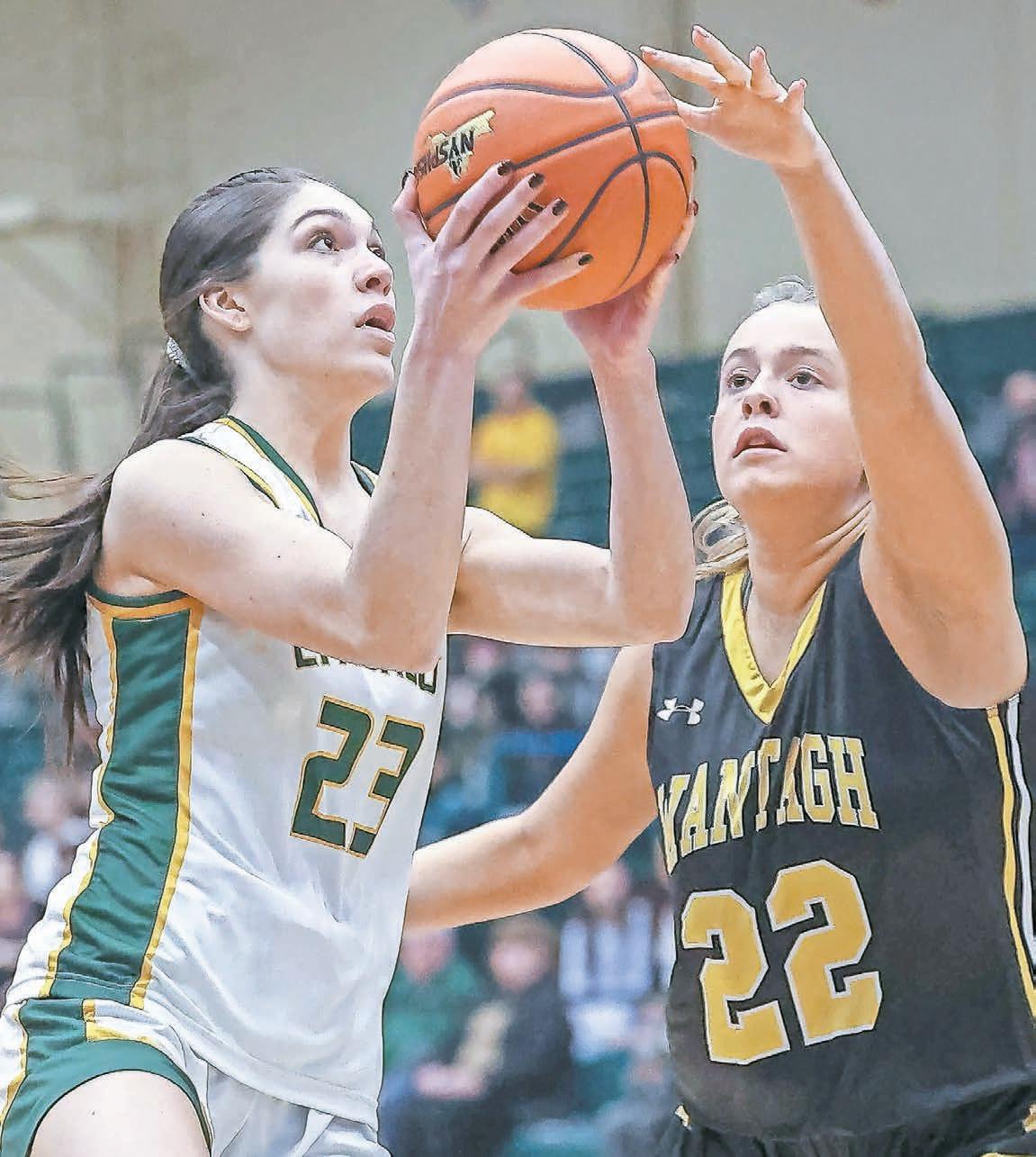
2:03 remaining after a pair of Mannix free throws. Dwyer scored the next three points, including a midcourt steal and layup, to put Lynbrook ahead 43-40 with about a minute left in regulation.
“Lynbrook is the only team to beat us all season,” Mannix said. “They always give us a tough time. It’s always a great matchup.”
In the semifinals March 6 at Farm-
ingdale State, Wantagh had to work overtime to take down No. 3 North Shore, 52-46. Cerasi scored 10 of her 13 points in the fourth quarter and OT to lead the come-from-behind win. Mannix had 18 points, 7 blocks and 5 steals, Forthofer added 8 points and 10 rebounds and McNeil had 9 points as the Warriors rallied from a 35-27 deficit through three quarters.
Lynbrook trailed fourth-seeded Seaford by eight points in the first quarter of the semis but quickly assumed control in a runaway 83-53 victory that same night. Senior Kaitlyn Benedict scored 11 of her season-high 23 points in the first quarter and nailed seven three-pointers on the night. Mazzei added 23 points, Cate Jennings 18 and Dwyer 13.

By Kelsie Radziski
Visionaries, advocates and trailblazing leaders gathered at the Heritage Club in Bethpage on Feb. 26 to celebrate groundbreaking innovations and inspire bold action toward a sustainable future. From young students to influential policy-makers to community members making a difference, the Herald Sustainability Awards of Long Island, presented by Reworld, recognized those whose efforts are shaping a cleaner, greener tomorrow.
“It is an honor for us at the Herald and Reworld to showcase the achievements of these leaders,” Stuart Richner, president and publisher of Richner Communications Inc. and the Herald, said.
As Azeez Mohammed, CEO of Reworld, emphasized, the commitment to sustainability is not just about progress — it’s about making a lasting, positive impact.
“We are honoring those leaders and budding youngsters who demonstrated a commitment to sustainability, and that matters a lot to us,” Mohammed said. “Because with Reworld, our claim to fame is that we are the only company that manages waste in a sustainable manner.”
Reworld utilizes “infrastructure, technology and imagination to solve complex waste management challenges and help create a sustainable and more prosperous future for businesses and communities,” according to the company’s website.
Reworld was represented at the awards ceremony by Maureen Early, lead community relations specialist; Dawn Harmon, director of Long Island market; Adel Omrani, president of the East Region; and Lloyd Naideck, director of state government relations along with many other Reworld team members.
“We’re delighted to be able to honor all of these sustainability champions here tonight,” Early said. “So many of them have done so much in making Long Island a better place to live, work and play.”
Two young students were recognized for their sustainability efforts. Joseph Petraro, an 11-year-old who is a freshman at Louisiana State University, founded the Joe’s Be Kind Campaign, a nonprofit aimed at promoting positive social change, especially for vulnerable children. The initiative’s mission is to foster kindness, inclusivity and connections throughout communities, and to promote positive mental well-being.
“I used to get bullied when I was a lot younger,” Joseph said, “and I don’t want other people to feel that same way.”
He also started other initiatives, including the Clean Wells for Humanity program, which tackles global water scarcity, and the Adopt-a-Grandparent program, which fosters intergenerational bonds and promotes sustainable living practices. Joseph’s efforts to bring people together to help the environment made him a Student Champion for Sustainability Award winner.
Desiree Mohammadi, a 12-year-old student at South Woods Middle School, in Syosset, was honored for her initiative Seeds of Hope, which began when she saved the seeds from the vegetables in her family’s garden. Seeds of Hope has blossomed into a bigger movement, and Desiree has partnered with Island Harvest to plant seeds every spring at the nonprofit’s Healthy Harvest Farm in Brentwood.
“I think it’s a human right that people should be able to access fresh fruits and vegetables,” she said. Both student award winners were also presented with $2,500 to support their education or future sustainability projects.
Other honorees include Don Clavin, Town of Hempstead supervisor, and Rich Schaffer, Town of Babylon supervisor, who received Environmental Leader in Policy awards. They have each made efforts, working with Reworld, to improve sustainability and environmental efforts in their towns.

“It’s a great honor to be recognized by the Herald and by Reworld,” Schaffer said. “Reworld has been an excellent partner with the Town of Babylon, and it’s probably the main part of our solid waste infrastructure and how we deal with making sure the garbage leaves the curb and is dealt with correctly.”
Local community leaders were also recognized for their work. Adrienne Esposito, executive director of Citizens Campaign for the Environment, works to protect natural resources and public health. She and her organization have taken on challenges such as upgrading failing sewage-treatment systems, protecting and filtering drinking and surface water and supporting large-scale renewable-energy projects in the interest of improving the environment.
“We really feel it’s our job to make sure Long Island is clean, safe and sustainable for now and in the future,” Esposito said.
Gregory Sandor, executive director of Cornell Cooperative Extension of Nassau County, was honored as well, for the strides the organization has made during his 12 years of leadership. The group has earned grant funding for a number of its specialized programs, including renewable energy, sustainable food systems, urban forestry and youth development. Cornell Cooperative is currently working with Reworld to build a Dynamic Learning Center in East Meadow, with the goal of educating the public about sustainability issues.
“We’re always looking at sustainability issues and how to be more resilient,” Sandor said. “So it’s exciting to be a part of that, and be a part of this different group of leaders that are being recognized.”
As attendees mingled and celebrated the honorees, vendors offered their donated products, among them Barrier Brewing Co., Garvies Point Craft Brewery, Farrm Wines, Borghese Vineyard, Del Vino Vineyards, Loughlin Vineyard and Twisted Cow Distillery.
The Herald Sustainability Awards were a testament to the collective impact when leaders and advocates unite with a shared purpose. The inaugural event showed that commitment to sustainability is about leaving a lasting, positive imprint on the world for generations to come.




